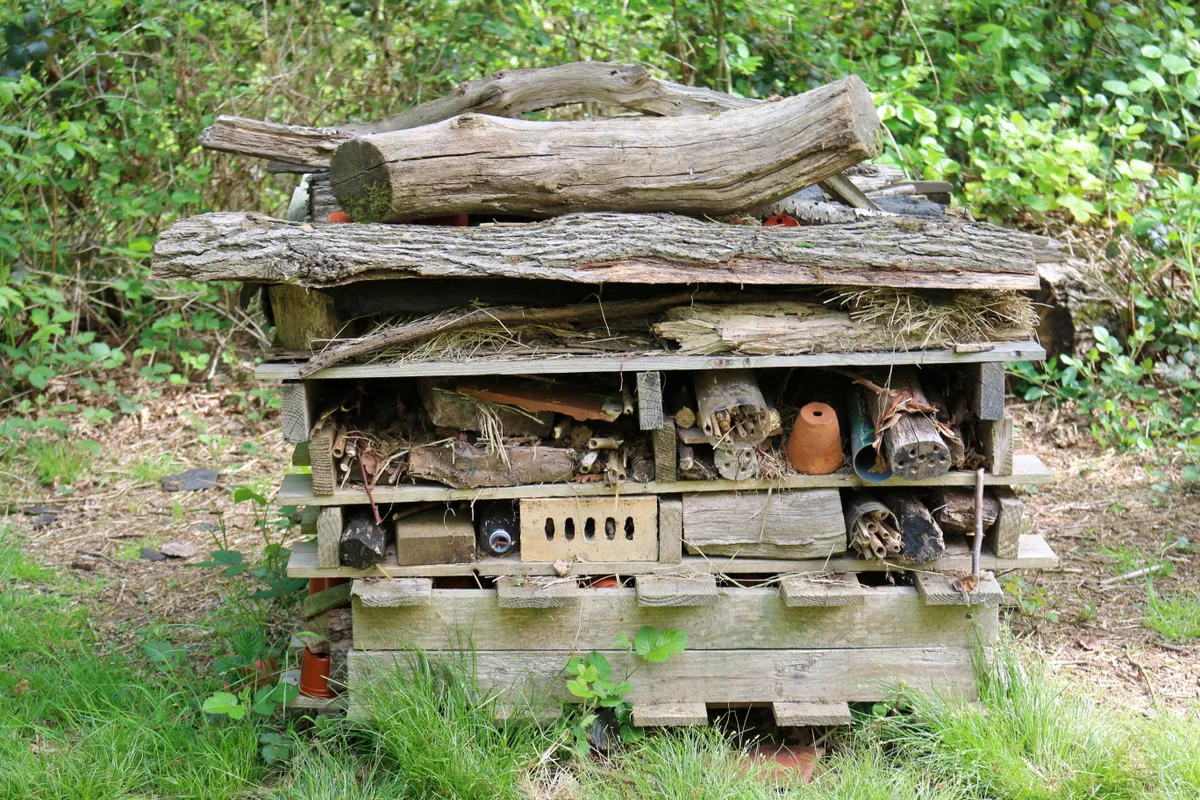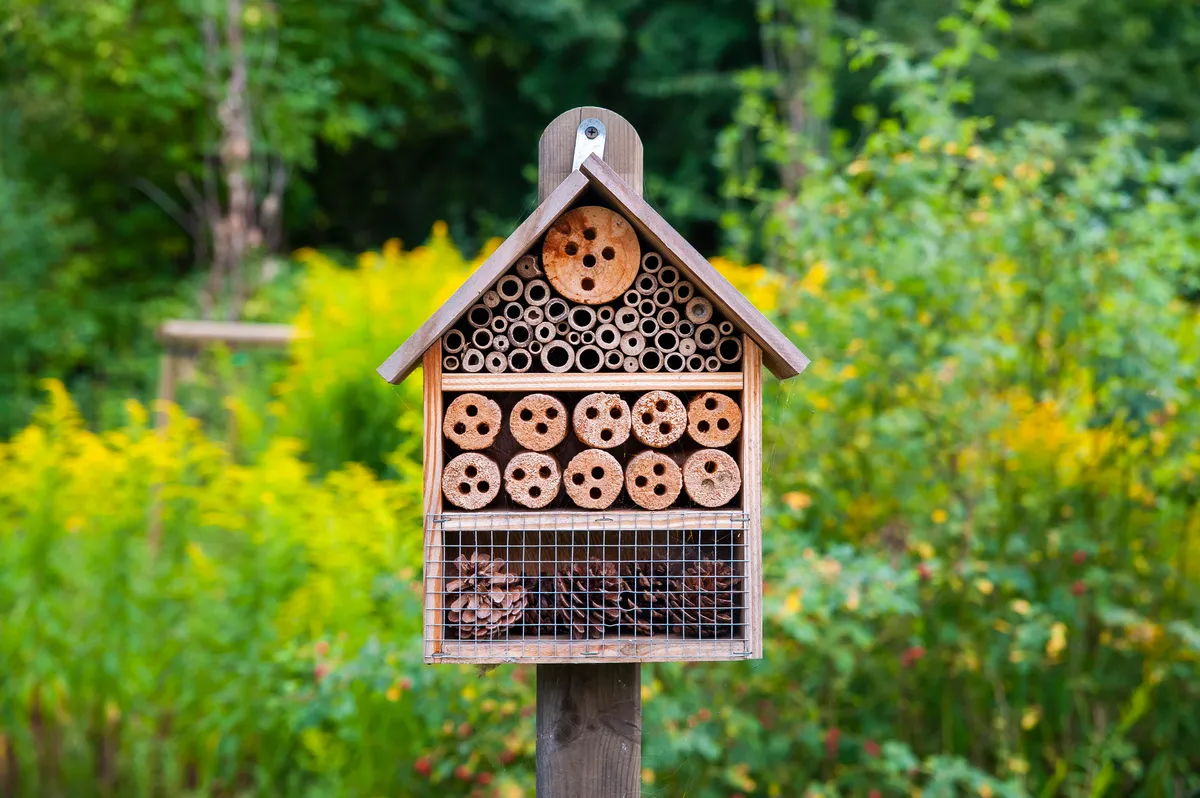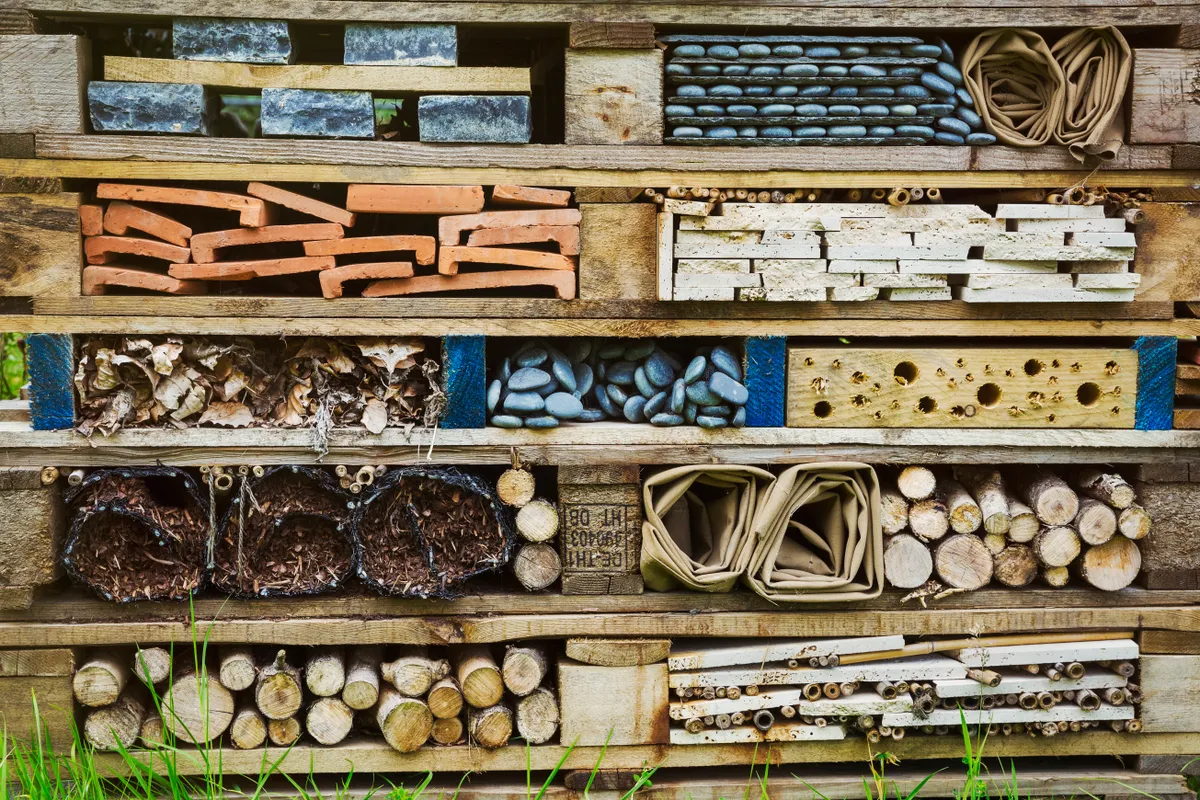A single garden can support over 2,000 species of insects, and by providing a variety of habitats for them you can drastically increase your garden's biodiversity and the number of bugs you see in your garden.
One habitat you can provide is an insect or bug hotel – a layered structure of gaps and crevices to provide a home for lots of different types of mini-beasts, such as ladybirds, bees, spiders and woodlice. It's a safe space for these insects to lay their eggs, raise their young and shelter from predators.

Making a bug hotel is a fun activity to do with the kids and it can be done in a variety of ways. One easy and popular way is to use old wooden pallets stacked on top of each other to provide the frame. If you can't get hold of pallets, use an old wooden crate with the back cut out, or make your own frame using pieces of timber nailed together.
Whatever frame you use, the most important (and fun) thing to do is creating the layers of habitats inside, using cardboard, leaf litter, twigs, stones, bark and all sort of material that insects will love to shelter in.
How to make a bug hotel
Where is the best place to put a bug hotel?
It needs to be placed somewhere flat for a secure and sturdy base, in moderate shade near plants, shrubs or trees so insects can easily access the hotel.
For the bug hotel frame you will need:
A four-bar pallet that hasn't been treated or painted
For the layers of habitat you will need:
An engineering brick (a brick with holes)
Toilet roll tubes
Used plastic bottles (with the top and bottom cut off)
Bamboo canes
Compost
Leaf litter
Broken bricks, tiles, plant pots
Twigs, stones, loose bark, straw, strips of cardboard, etc

How to build the bug hotel
- Saw your pallet into four equal sections.
- Use one of the sections as the bottom layer for your frame and fill it with leaf litter and compost. This will provide shelter for beetles, woodlice and ladybirds.
- Place another palette section on top and fill with broken bricks, tiles, plant pots and twigs. The gaps and crevices will provide a home for spiders and beetles to hibernate in over winter.
- For the top two layers, place inside the pallets a variety of mini habitats, including the engineering brick, toilet roll tubes and plastic bottles filled with bamboo canes (these are ideal for homing solitary bees) and rolled up strips of cardboard. Fill any large gaps with bark, twigs, stones and straw.
- Your bug hotel is ready to start welcoming visitors! Keep revisiting over the weeks and months to see what sorts of critters you've created a home for.

